The Role of Peer Modeling in ABA Therapy for Autism Spectrum Disorder
Harnessing Peer Influence in Autism Therapy for Enhanced Social Skills

Understanding Peer Modeling Within ABA Therapy
Applied Behavior Analysis (ABA) remains one of the most effective interventions for children on the autism spectrum, aiming to improve social, communication, and behavioral skills. A growing area within ABA therapy is the role of peer modeling, where typically developing peers are trained to facilitate social learning and interactive play, creating more natural and generalized social environments. This article explores the integration of peer modeling into ABA therapy, examining its methods, benefits, research evidence, and future directions to enrich social skills development in children with Autism Spectrum Disorder (ASD).
Foundations of Applied Behavior Analysis (ABA) Therapy

What is Applied Behavior Analysis (ABA) therapy?
Applied Behavior Analysis (ABA) therapy is an evidence-based intervention designed to improve social, communication, and behavioral skills, particularly in children with autism spectrum disorder (ASD). It relies on scientific principles of learning and behavior, using personalized programs that focus on promoting positive behaviors and reducing challenging ones. ABA involves techniques such as positive reinforcement, prompting, and modeling to systematically teach new skills.
Principles and Goals of ABA
The main goal of ABA therapy is to enhance adaptive behaviors while reducing autism-related symptoms. It emphasizes early intervention, ideally before ages 3 to 6, to achieve better developmental outcomes. ABA programs prioritize improving social interaction, communication, and daily living skills. Therapy is systematic and collaborative, often involving parents, therapists, and specialists to ensure a consistent and supportive approach.
Settings and Modalities of ABA Therapy Delivery
ABA therapy can be delivered in a variety of settings including homes, schools, and community environments. Treatment is often customized to meet the unique needs of each child and delivered by qualified practitioners such as Board Certified Behavior Analysts (BCBAs). Collaborative team approaches involving family members and peers also play an important role, allowing for naturalistic learning opportunities and generalization of skills.
Benefits of ABA Therapy for Individuals with Autism
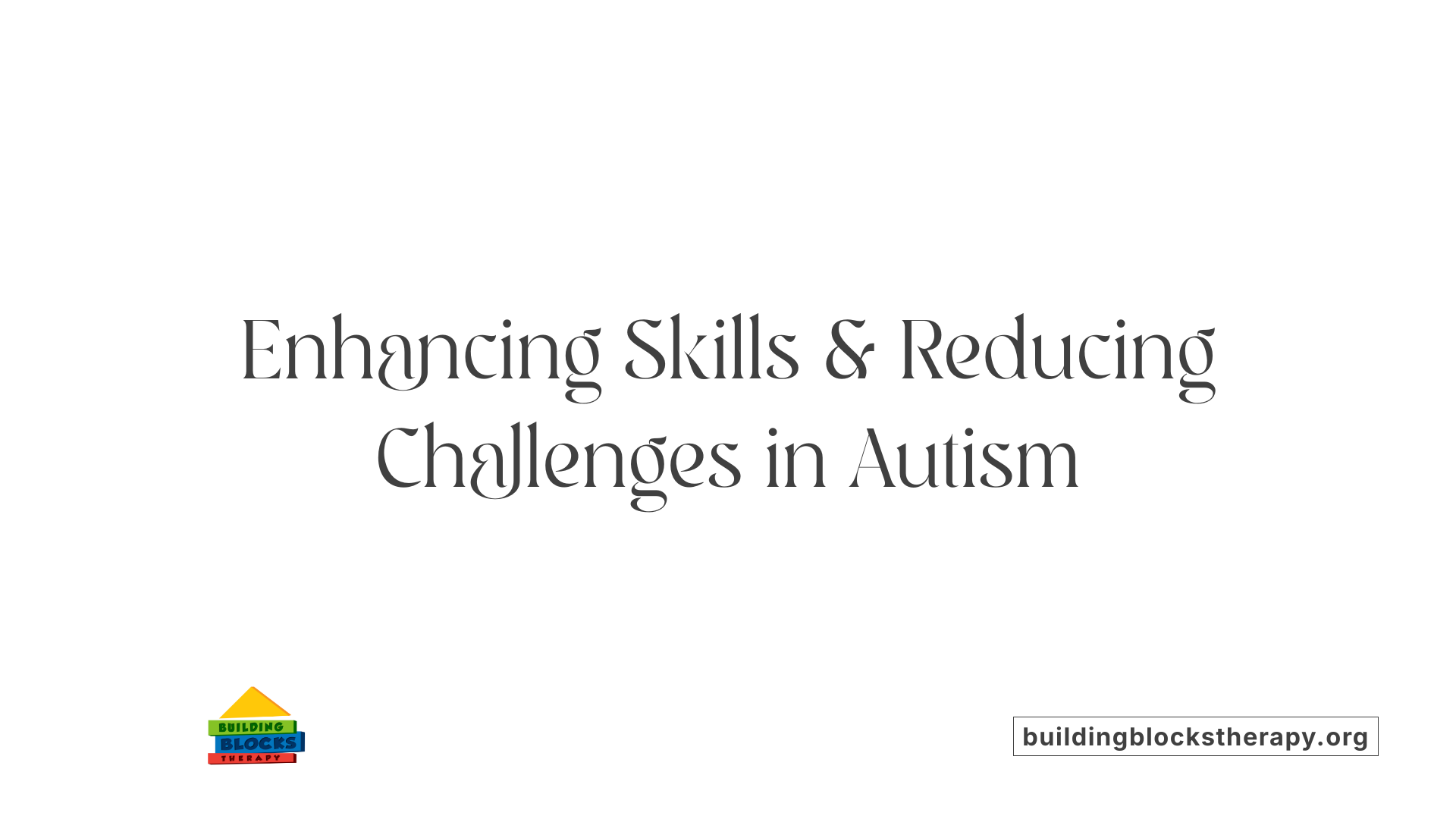
How does ABA therapy benefit individuals with autism?
Applied Behavior Analysis (ABA) therapy supports individuals with autism by systematically developing vital skills in communication, social interaction, and daily living. Through evidence-based approaches such as positive reinforcement, ABA breaks down complex skills into manageable steps, helping children learn behaviors that enhance their independence and quality of life.
ABA therapy also effectively reduces challenging behaviors by analyzing them within the ABC framework (Antecedent, Behavior, Consequence). This analysis allows therapists to replace harmful or disruptive behaviors with functional and socially acceptable alternatives tailored to each child’s needs.
Skill development through ABA
ABA treatment improves language skills, adaptive behaviors, and IQ scores, especially when applied early, ideally before age six. Research consistently shows that systematic ABA interventions enhance social group skills, peer interaction, and social communication in children with autism spectrum disorder (ASD). Family involvement and collaboration with therapists and specialists create a supportive environment promoting skill growth.
Reduction of challenging behaviors
Evidence-based ABA programs identify the triggers and outcomes of challenging behaviors to teach alternative coping and communication strategies. This leads to decreased occurrences of behaviors that interfere with learning or social engagement.
Impact on social, communication, and daily living skills
ABA therapy improves interpersonal skills such as eye contact, joint attention, conversational abilities, and appropriate social responses. These gains help children integrate into inclusive educational settings and develop meaningful peer relationships. By targeting critical skills in natural environments and involving peers and family members, ABA fosters long-term skill maintenance and generalization.
| Area | Benefits | Details |
|---|---|---|
| Communication Skills | Improved language and conversation | Systematic teaching of communication, including social cues |
| Social Skills | Enhanced peer interaction | Increased initiation, response, and engagement with peers |
| Challenging Behaviors | Reduced disruptive behaviors | Functional behavior assessments and replacement strategies |
| Daily Living Skills | Greater independence | Support for adaptive behaviors in everyday activities |
| Family Involvement | Collaborative, consistent support | Inclusion of parents and siblings in therapy promotes success |
Overall, ABA therapy creates meaningful improvements in core and adaptive areas for children with ASD, helping them achieve greater independence and social participation.
Who Provides ABA Therapy? Qualifications and Expertise
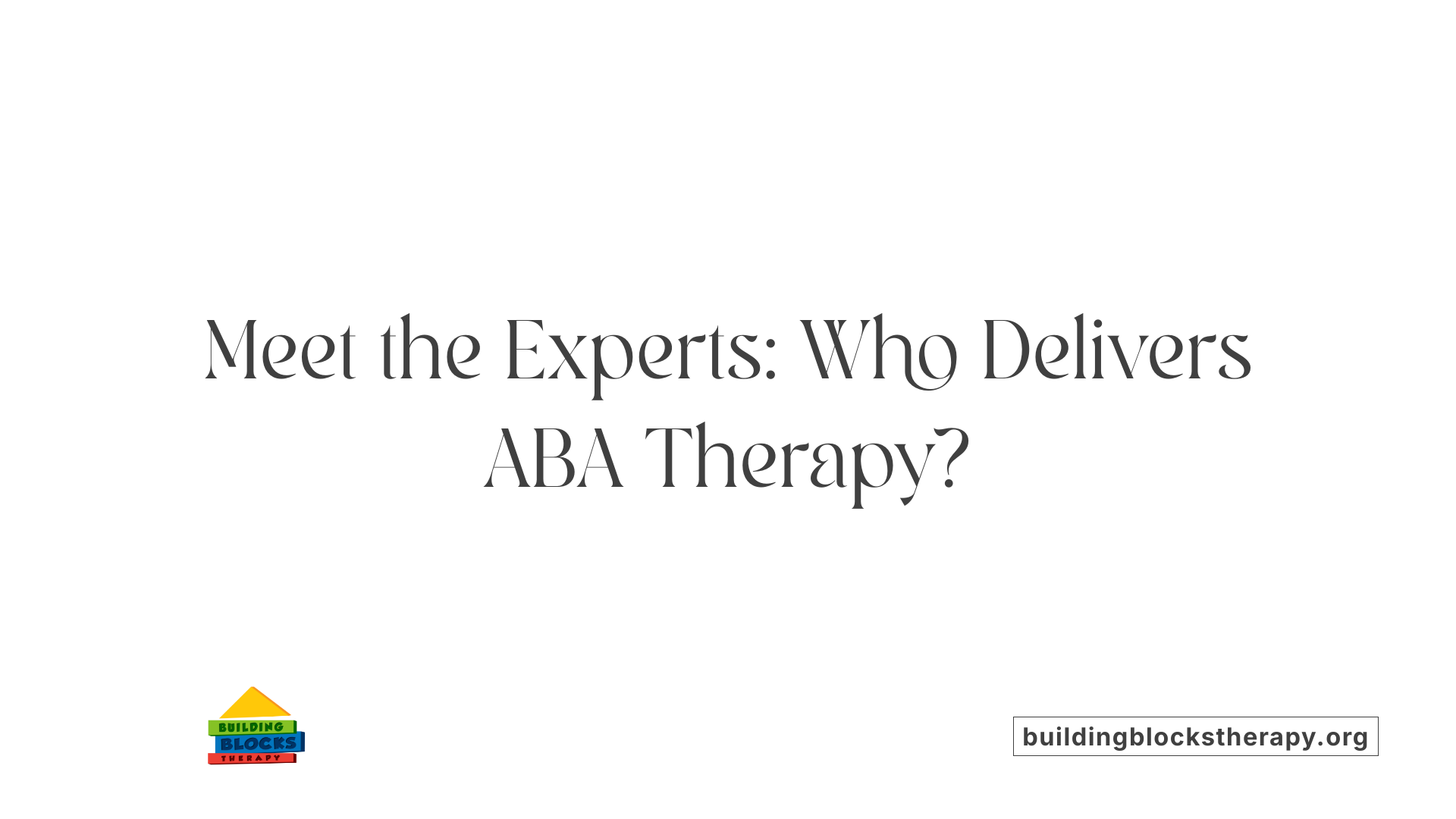
Professionals Delivering ABA Therapy
Applied Behavior Analysis (ABA) therapy is administered by a team of trained professionals, mainly including Board Certified Behavior Analysts (BCBAs), registered behavior technicians (RBTs), and other specialized therapists. These practitioners work collaboratively to deliver systematic, evidence-based interventions to children with autism spectrum disorder (ASD) and other developmental challenges.
Training and Certification Requirements
To become an ABA therapist, individuals generally start with an undergraduate degree in psychology, education, or a related discipline. This is typically followed by advanced graduate studies focused specifically on applied behavior analysis. Certification and licensure requirements vary across regions but often include passing rigorous examinations and accumulating supervised clinical experience. BCBAs, for example, must complete intensive coursework, supervised hours, and a board certification exam to ensure they meet professional standards.
Roles of Behavior Analysts and Technicians
BCBAs play a critical role in assessing client needs, designing customized intervention plans, and overseeing the implementation of ABA therapy. They continually monitor client progress and adjust treatment approaches based on data. Registered behavior technicians support these efforts by delivering direct therapy under BCBA supervision, applying behavior strategies in real-time, and collecting vital data to track treatment fidelity and outcomes.
This combination of specialized education, training, and certification ensures that ABA therapy is delivered effectively and ethically, maximizing benefits for children with ASD across diverse settings such as schools, clinics, and homes.
Techniques and Approaches Employed in ABA Therapy

What techniques are used in ABA therapy?
Applied Behavior Analysis (ABA) therapy utilizes a range of effective techniques designed to improve skills and reduce challenging behaviors in children with autism spectrum disorder (ASD). One fundamental method is Discrete Trial Training (DTT), which involves breaking down skills into small, manageable steps taught through structured, repetitive trials. This technique allows for clear instruction and immediate feedback.
In contrast, Natural Environment Training (NET) capitalizes on everyday situations and natural contexts to teach social, communication, and behavioral skills. This approach enhances generalization and makes learning more meaningful.
Modeling is another important technique, where therapists or peers demonstrate desired behaviors for children to imitate. This method is particularly useful in teaching social interactions and communication skills. Alongside modeling, prompting guides the child’s responses through verbal, gestural, or physical cues, gradually fading these supports as the child gains independence.
Reinforcement—either positive, such as praise or tangible rewards, or negative, such as removal of unpleasant stimuli—is central to encouraging and maintaining desired behaviors. Reinforcement strategies ensure that learning is motivating and sustained over time.
To teach complex behavior sequences, therapists use behavior chaining, which involves linking individual steps together, either forward or backward, toMaster multi-step tasks like dressing or completing classroom routines.
Behavior reduction strategies such as extinction, where reinforcement of unwanted behaviors is stopped, redirection, and script fading help decrease problematic behaviors and promote more appropriate alternatives.
Overall, these ABA techniques are customized for each child's needs, promoting lasting improvements in communication, social skills, and adaptive behaviors essential for daily functioning.
Individualizing ABA Therapy Programs
How is an ABA therapy program individualized?
An effective ABA therapy program begins with a thorough assessment tailored to the child's unique profile. This typically involves comprehensive Functional Behavior Assessments (FBA), direct observations in natural settings, and detailed interviews with caregivers to identify specific strengths, learning needs, and behaviors requiring intervention.
Assessment and functional behavior analysis
The evaluation identifies the functions of specific behaviors and clarifies skill gaps across social, communication, and adaptive domains. This data-driven approach enables therapists to define precise, measurable goals and determine the best methods for teaching essential skills.
Collaboration with families
Active participation of families shapes an individualized program by incorporating their values, routines, and expectations. Families provide critical insights into the child's preferences and cultural context, and therapists engage them as partners to reinforce learning, ensuring continuity of practice beyond therapy sessions.
Cultural and environmental considerations
Recognizing cultural backgrounds and environmental influences is essential to designing relevant interventions. Programs adjust techniques and materials to respect cultural norms and fit within the child's home and community settings, promoting generalization of skills across diverse environments.
Continuous monitoring and adjustment
Ongoing data collection tracks progress toward established goals, guiding adjustments to intervention strategies as needed. Flexibility allows the program to evolve with the child's development, optimizing effectiveness and addressing new challenges or changes in motivation.
Through this individualized and dynamic process, ABA therapy aims to maximize social communication, appropriate behavior, and overall adaptive functioning tailored specifically to each child's unique profile and context.
Introduction to Peer Modeling in ABA Therapy

What is Peer Modeling in ABA Therapy?
Peer modeling involves the use of typically developing children as role models to teach social and communication skills to children with autism spectrum disorder (ASD). In this approach, peers demonstrate appropriate social behaviors such as initiating interactions, maintaining eye contact, and responding during conversations. This method leverages the natural influence peers have within social settings to facilitate learning in a more relatable and engaging way.
How Do Typical Peers Contribute to Social Skill Development?
Typical peers play a vital role by serving as natural examples of social behavior. Children with ASD observe and imitate these peers, which helps them acquire essential skills like joint attention and conversational abilities. The presence of peers who model positive social interactions creates a supportive environment, enhancing motivation and participation in social activities. This strategy promotes authentic learning opportunities embedded in everyday social contexts.
What is the Theoretical Basis for Peer-Mediated Interventions?
Peer-mediated interventions (PMIs) are grounded in behavioral theories emphasizing social learning and reinforcement. By incorporating peers as active facilitators, these interventions capitalize on observational learning and peer influence to improve social responsiveness and motivation. Research shows PMIs are particularly effective in early intervention, fostering spontaneous engagement and sustained improvements in social communication among children with ASD.
Peer-Mediated Interventions (PMIs): Enhancing Social Skills Through Peers
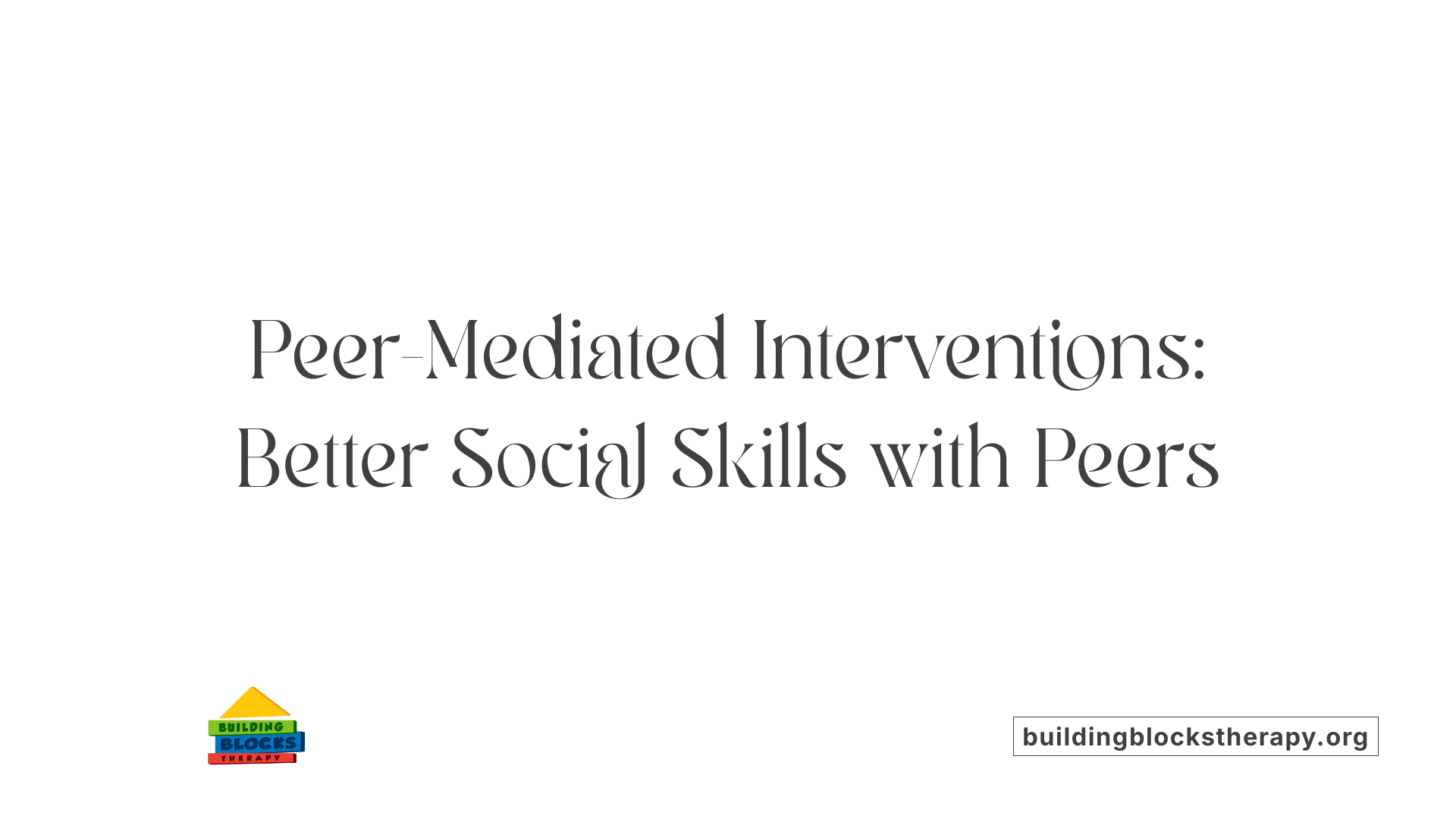
What Are Peer-Mediated Interventions in ABA?
Peer-Mediated Interventions (PMIs) are a specialized approach within Applied Behavior Analysis (ABA) therapy that utilize typically developing peers to promote social learning among children with Autism Spectrum Disorder (ASD). By engaging peers as role models, PMIs create supportive, natural social environments that encourage children on the spectrum to develop and practice essential social skills.
What Evidence Supports the Effectiveness of PMIs?
Extensive research, including randomized controlled trials, confirms the effectiveness of PMIs in enhancing social responsiveness and motivation in children with ASD. For example, a study by Covey, Li, & Alber-Morgan (2021) demonstrated that behavioral skills training for peer helpers in a classroom setting led to substantial improvements in interactive play for children with moderate to severe disabilities. Post-training engagement increased dramatically, from baseline rates as low as 6-18% up to 73-88%, maintaining consistency across follow-up sessions.
Beyond this, PMIs have been shown to yield long-lasting positive effects, encouraging spontaneous social interactions and improving social communication over time. These benefits extend across various settings such as schools, camps, and healthcare environments.
Which Social Skills Do PMIs Target?
PMIs primarily focus on vital interpersonal abilities including social initiation, peer interaction, eye contact, joint attention, and conversational skills. Training peers through direct instruction, role-playing, and immediate feedback equips them to model appropriate behaviors, such as introducing themselves and sharing in play activities. This peer influence helps children with ASD generalize learned social skills to new activities and partners, facilitating natural and meaningful peer relationships.
Integrating family members, like siblings, into these interventions further enhances their effectiveness, ensuring social skills growth within the broader social context. Overall, PMIs represent a powerful, evidence-based strategy in ABA to cultivate social competence in children with ASD.
Behavioral Skills Training (BST) for Peer Models: Methods and Results

What Are BST Protocols for Training Peers?
Behavioral Skills Training (BST) is a structured approach used to equip peer helpers with the tools they need to support children with disabilities. In the study by Covey, Li, & Alber-Morgan (2021), peer helpers—sixth-grade girls—were trained using a detailed 16-step protocol. This protocol provided a clear framework to ensure that the peer helpers could effectively engage children with moderate to severe disabilities in interactive play.
How Are Instruction, Role-Playing, and Feedback Incorporated?
The BST approach included several components:
- Direct Instruction: Clear explanations about the target social skills and the steps involved.
- Demonstration: Modeling of the desired behaviors by trainers.
- Role-Playing: Practice sessions where peer helpers simulated interactions.
- Immediate Feedback: Trainers provided corrective guidance and positive reinforcement during practice. This comprehensive approach helped peer helpers attain a high fidelity of implementation, with success rates between 80% and 100%.
What Were the Research Outcomes from the Covey, Li, & Alber-Morgan (2021) Study?
The study took place in an authentic classroom setting, enhancing its ecological validity. After training, peer helpers showed strong ability to transfer their skills to new activities and interact with untrained partners. For children with disabilities, interactive play engagement improved dramatically, increasing from baseline levels as low as 6-18% to about 73-88% during intervention and follow-up.
These results demonstrate that BST, combined with peer modeling, effectively promotes social play in children with disabilities. The gains were not only significant but also maintained over time and generalized across various contexts. While the study highlighted some limitations, such as age differences between the peer helpers and the target students, the positive outcomes and social validity feedback reinforce the value of this targeted training methodology.
Impact of Peer Modeling on Children with Autism Spectrum Disorder
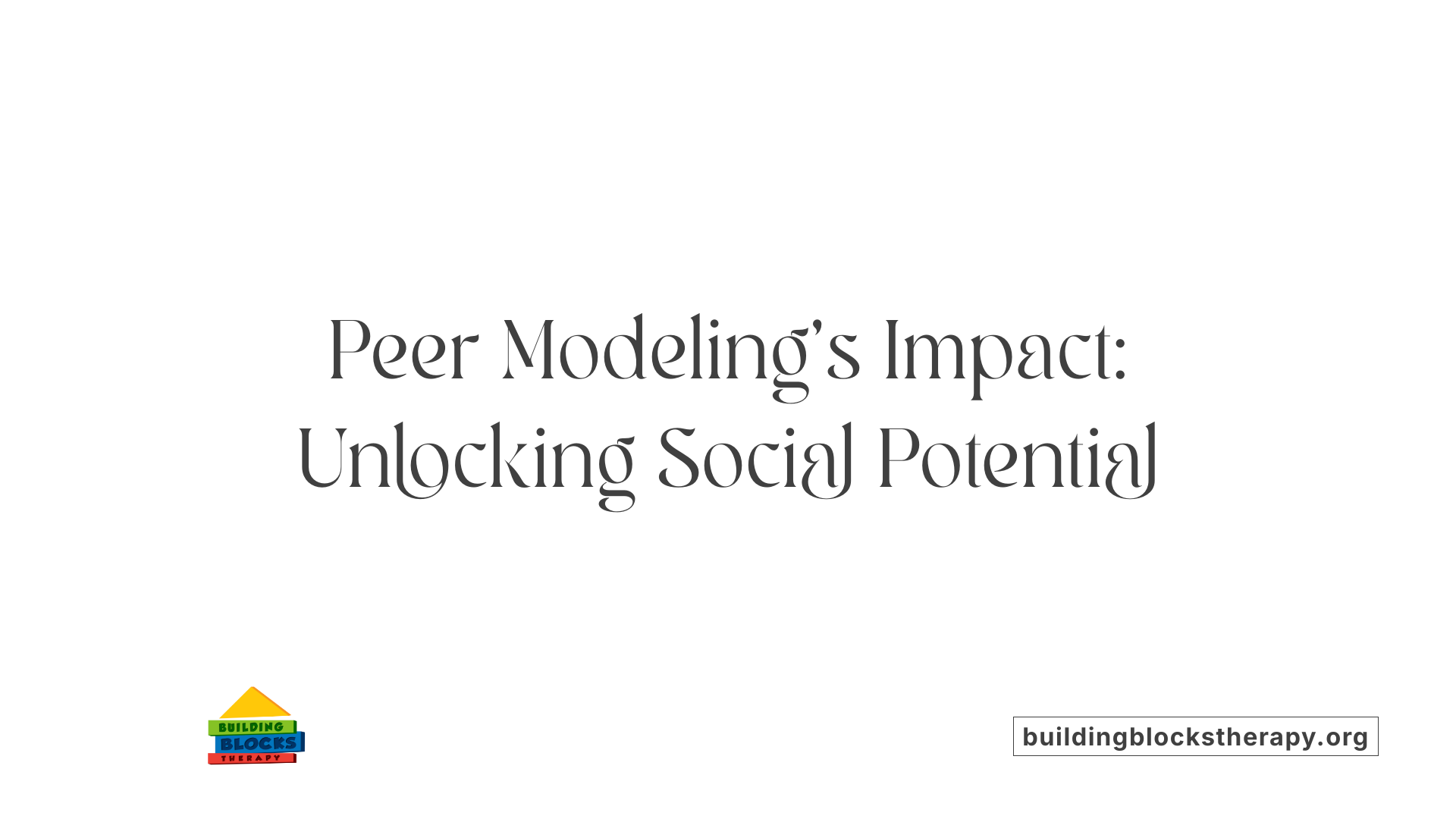
How Does Peer Modeling Improve Social Play and Engagement in Children with ASD?
Peer modeling involves using typically developing children as role models to help children with autism spectrum disorder (ASD) develop social skills. Research demonstrates that when peers are trained through behavioral skills training (BST), such as the 16-step protocol used with sixth-grade girls, they successfully facilitate interactive play. Children with ASD showed dramatic improvements, increasing engagement from just 6-18% at baseline to approximately 73-88% during intervention phases.
Can Improvements Through Peer Modeling Generalize and Maintain Over Time?
One significant advantage of peer modeling interventions is their lasting effect and generalizability. In studies, trained peer helpers maintained high fidelity (80-100%) in their roles. The positive social play skills gained by children with disabilities transferred to new activities and interactions with previously untrained partners. This suggests that the skills learned are not confined to a specific situation but can be applied more broadly in real-world settings.
In What Ways Does Peer Modeling Promote Spontaneous Social Interactions and Communication?
Peer-mediated interventions (PMIs) encourage spontaneous social engagement by fostering eye contact, joint attention, and conversational abilities. Children with ASD imitate peer models who demonstrate social behaviors such as introducing themselves and initiating play. This modeling naturally supports the development of social initiation and response skills. Moreover, research highlights that PMIs enhance social motivation and responsiveness, leading to increased spontaneous social interactions and communication.
The use of peer models creates a supportive social environment where children with autism can learn through observation and interaction, leveraging their visual learning strengths. Family involvement, including siblings, further enriches these interventions, ensuring a nurturing and inclusive context for social growth.
Advantages and Challenges of Peer Modeling in ABA Therapy
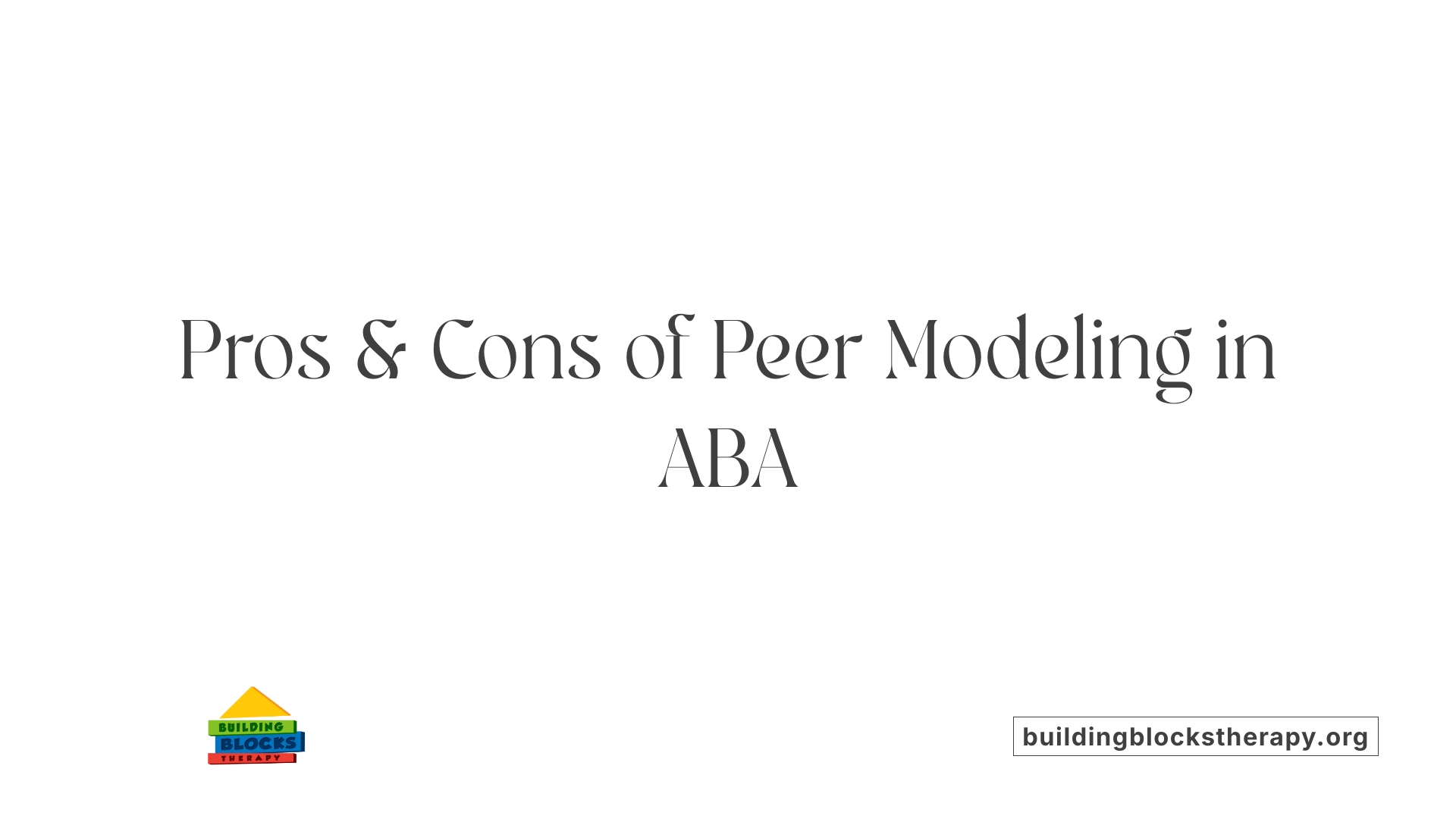
What Are the Benefits Such as Naturalistic Learning and Motivation?
Peer-mediated interventions (PMIs) in ABA therapy utilize typically developing peers as role models to enhance social skills in children with autism spectrum disorder (ASD). One major advantage is the naturalistic learning environment created when children observe and imitate peers displaying appropriate social behaviors. This setting encourages spontaneous social initiation, response, and communication, such as making eye contact, joint attention, and holding conversations.
Engagement with peers increases social motivation, reduces undesirable behaviors, and fosters meaningful social interactions. PMIs have been successfully applied across diverse settings, including schools, camps, and hospitals, allowing children with ASD to practice new skills in real-life contexts. The visual learning preferences common in children on the spectrum make observing peer behavior especially effective.
What Are the Limitations Including Age Gaps and Pairing Challenges?
Despite its many benefits, peer modeling in ABA therapy comes with some limitations. Studies have identified age differences between peer models and children with ASD as a potential barrier. For example, training older peer helpers to assist younger children may affect the dynamics of play and interaction. Additionally, randomly pairing peers without consideration of social compatibility can limit the success of social learning outcomes.
These challenges highlight the importance of careful selection and training of peer models to maximize intervention effectiveness. Although peer helpers can demonstrate high-fidelity implementation of behavioral skills training, matching participants to optimize social engagement remains an area for improvement.
What Are the Social Validity and Ecological Considerations?
The real-world applicability of peer-mediated ABA interventions is a significant strength. Research demonstrates positive social validity, with participants providing favorable feedback on their experiences. Interventions delivered in actual classroom settings show that peer modeling techniques help generalize social skills to new situations and partners over time.
Moreover, family involvement, including siblings, enhances the ecological validity and sustainability of these approaches. Incorporating family engagement ensures that skills learned during peer interactions extend into home and community contexts. Such holistic involvement promotes lasting social competence for children with ASD.
The balance of advantages and limitations suggests that while peer modeling is a powerful tool in ABA therapy, thoughtful implementation and ongoing refinements are essential to optimize outcomes for children on the autism spectrum.
Family and Sibling Engagement in Peer-Mediated ABA Interventions
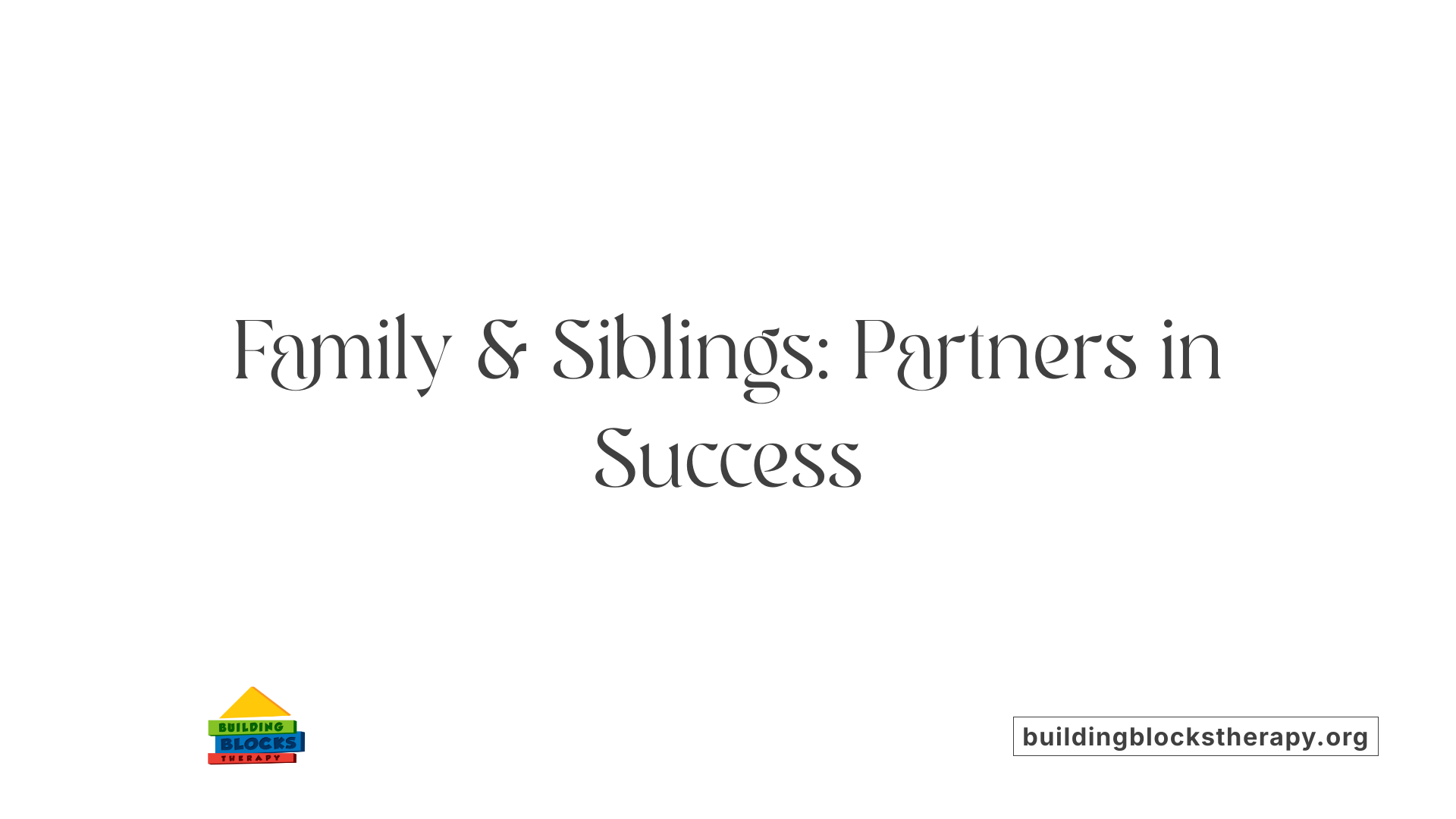
What is the Role of Siblings and Family in Peer Modeling?
Family members, especially siblings, play a vital role in peer-mediated interventions within ABA therapy. Siblings often serve as natural peer models who can demonstrate appropriate social behaviors in everyday contexts. Their involvement supports generalization of social skills beyond structured therapy settings, offering consistent opportunities for children with ASD to practice interaction and communication.
How Does Collaboration Between Therapists, Families, and Peers Enhance Intervention?
Effective peer-mediated ABA interventions rely on collaboration among therapists, family members, and typical peers. Therapists train both peers and family members in behavioral skills, ensuring they use consistent strategies like direct instruction, role-playing, and immediate feedback. Families help reinforce these strategies at home, creating a cohesive support network that boosts the child’s social engagement and communication across multiple environments.
How Can Family Involvement Enhance the Effectiveness of Peer-Mediated ABA Interventions?
Involving families enhances intervention effectiveness by promoting ongoing practice and encouragement. When siblings and parents participate actively, they contribute to a supportive social environment that motivates children with ASD. Family engagement also facilitates early intervention, which is linked to better long-term outcomes in social skills. This collaboration extends learning beyond therapy, aids integration into inclusive settings, and fosters meaningful peer relationships that can endure over time.
Future Directions and Research Needs in Peer Modeling for ABA Therapy
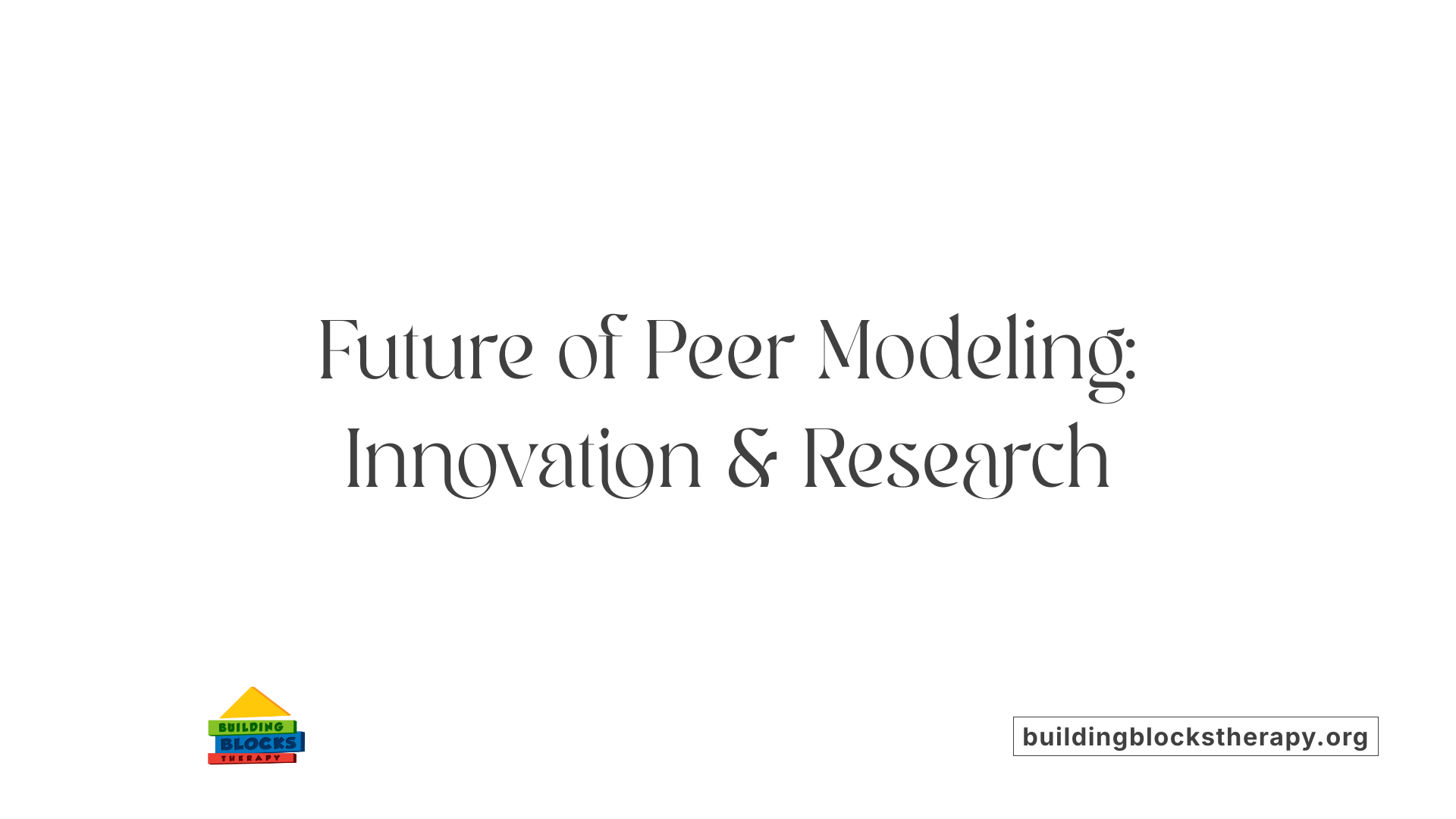
Exploring PMIs beyond school settings
Future research is increasingly focused on extending peer-mediated interventions (PMIs) beyond traditional school environments. Although schools remain a primary setting, there is growing interest in implementing PMIs in diverse contexts such as camps, hospitals, and community centers. This expansion aims to provide children with autism spectrum disorder (ASD) more varied and naturalistic social learning opportunities, enhancing generalization of skills across different environments.
Examining peer characteristics and cultural factors
Another important area for future investigations involves deeper analysis of the characteristics of peer models used in these interventions. Understanding how factors such as age, social skills, and cultural background influence the effectiveness of peer modeling can help tailor interventions more precisely. Cultural considerations, in particular, may affect social norms and interaction styles, impacting how social skills are taught and learned in diverse populations.
Long-term effects and technological integration
Research also aims to clarify the long-term outcomes of PMIs, assessing durability and maintenance of social skills improvements over months and years. Additionally, there is growing interest in integrating technology, such as video modeling or virtual reality, with traditional peer-mediated approaches. These innovations could increase engagement and accessibility, providing new avenues for practicing social skills in safe, scaffolded digital environments.
Together, these research directions will expand the scope and effectiveness of peer modeling within Applied Behavior Analysis therapy, ensuring that interventions remain inclusive, culturally sensitive, and sustainable for children with ASD.
Harnessing Peer Influence to Enhance ABA Therapy Outcomes
Peer modeling within Applied Behavior Analysis therapy represents a powerful, evidence-based approach to enrich social skills development in children with autism spectrum disorder. By leveraging the natural influence and behaviors of typically developing peers, these interventions create supportive, motivating environments that foster social initiation, communication, and interactive play. Research underscores the effectiveness of behavioral skills training in preparing peer models and shows significant, lasting improvements in social engagement for children with ASD. Nevertheless, addressing challenges such as matching peers and considering cultural context remains vital. Moving forward, deepening research into diverse settings and long-term outcomes will further optimize these interventions. Overall, integrating peer modeling into ABA therapy holds great promise for helping children on the spectrum achieve meaningful social connections and improved quality of life.
References
- The Impact of Applied Behavior Analysis on Children with ...
- Using Behavioral Skills Training to Teach Peer Models
- Peer-Mediated Interventions in ABA Autism Treatment
- Using Typical Peers as Role Models to Help Improve ...
- How to Become an Applied Behavior Analyst (ABA) Therapist
- How to Become an ABA Therapist - School of Education
- Individualization in the Treatment of Children with Autism
- Benefits of Individualized ABA Therapy Programs - Horizon ABA
- The Power of Applied Behavior Analysis Therapy






